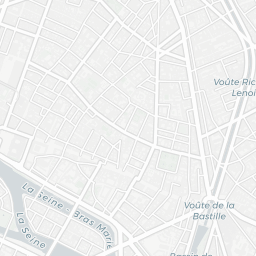About Fontaine des Innocents
The Fontaine des Innocents stands as a remarkable example of Renaissance art in the heart of Paris. Its elegant arches and intricate reliefs capture the eye, each side adorned with nymphs and cherubs that seem to dance across the stone. Originally designed by architect Pierre Lescot and sculptor Jean Goujon in the mid-16th century, the fountain was part of a grander scheme to celebrate the entry of King Henry II into Paris. The delicate carvings, with their fluid lines and classical motifs, reflect the artistic transition from Gothic to Renaissance styles, showcasing the human form in graceful, naturalistic poses.
Located in the bustling area of Les Halles, the fountain has witnessed centuries of Parisian life, from the vibrant markets of the past to the modern urban landscape. Its presence is a testament to the city's ability to preserve its historical treasures amidst constant change. Originally part of the Cemetery of the Innocents, the fountain was moved to its current location in the 18th century, where it continues to be a focal point for both locals and tourists. The fountain's history is intertwined with the evolution of Paris itself, marking the passage of time through its enduring beauty.
Right Where It Began
The Fontaine des Innocents was initially constructed as a wall fountain, integrated into the Cemetery of the Innocents, which was the largest cemetery in Paris until its closure in the late 18th century. The cemetery was a central part of Parisian life, and the fountain served as both a decorative and functional element. When the cemetery was cleared due to health concerns, the fountain was preserved and relocated, a decision that highlights its cultural and artistic significance. Today, it stands as a reminder of the city's medieval past, even as the surrounding area has transformed into a modern commercial hub.
Plan your perfect trip to Paris with Travo! Download now and start exploring.
Marks of Time
The fountain's reliefs, carved by Jean Goujon, are masterpieces of Renaissance sculpture. Each panel depicts mythological scenes, with figures that embody the grace and elegance of the period. The nymphs, with their flowing hair and draped garments, are captured in dynamic poses that suggest movement and vitality. These carvings have weathered the centuries, their details softened by time yet still conveying the artistic ideals of harmony and proportion. The fountain's design, with its harmonious blend of architecture and sculpture, reflects the Renaissance pursuit of beauty and balance.
Stories in Stone
The reliefs on the Fontaine des Innocents tell stories of classical mythology, a common theme in Renaissance art that sought to revive the ideals of ancient Greece and Rome. The figures, with their serene expressions and graceful forms, invite viewers to contemplate the timeless narratives of love, beauty, and nature. These stories, carved into stone, connect the past with the present, offering a glimpse into the cultural and intellectual currents of the Renaissance. The fountain's ability to convey these stories through its art is a testament to the skill and vision of its creators.
Details That Speak
Notice the intricate details of the fountain's carvings—the delicate folds of the nymphs' garments, the playful expressions of the cherubs, and the fluidity of the water that seems to cascade from their hands. These elements speak to the mastery of Jean Goujon, whose work exemplifies the Renaissance focus on naturalism and anatomical precision. The fountain's design, with its emphasis on verticality and symmetry, draws the eye upward, creating a sense of movement and life. Each detail, from the smallest ripple in the water to the grand arches above, contributes to the overall harmony of the piece.
Living History
Today, the Fontaine des Innocents is more than just a historical monument; it is a living part of Parisian culture. Surrounded by the vibrant energy of Les Halles, it serves as a gathering place for locals and visitors alike. The fountain's presence in this modern setting highlights the city's ability to blend the old with the new, preserving its rich heritage while embracing contemporary life. As people pause to admire its beauty or simply enjoy a moment of respite, the fountain continues to fulfill its original purpose as a source of inspiration and reflection, bridging the past and present in the heart of Paris.
Location
Place Joachim du Bellay, 75001, Paris





